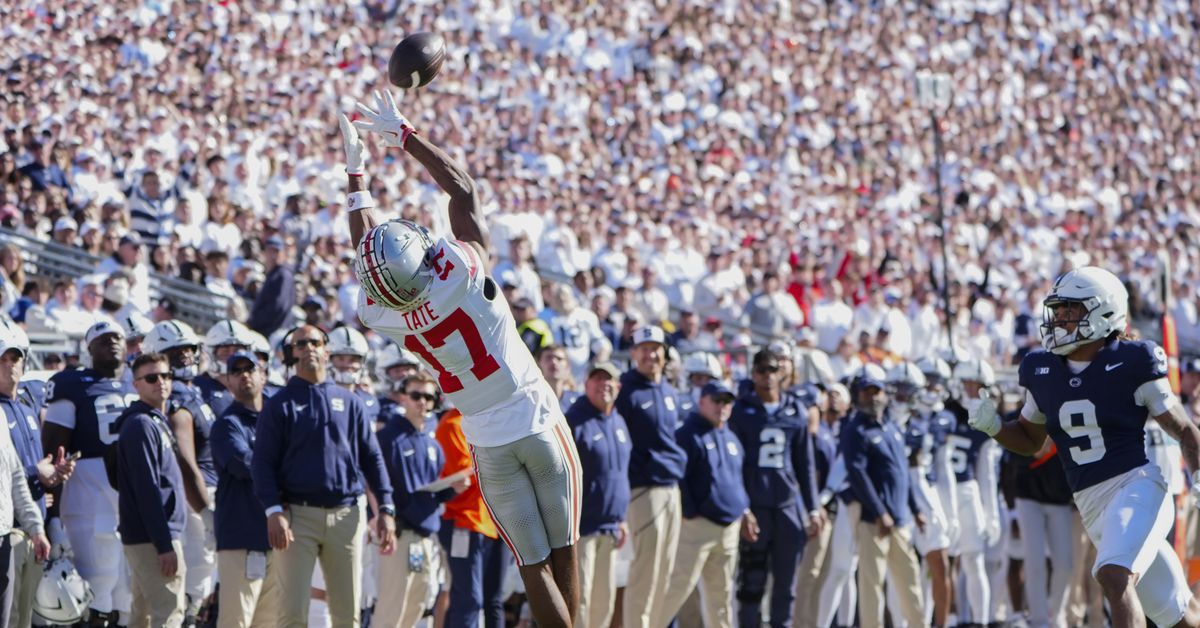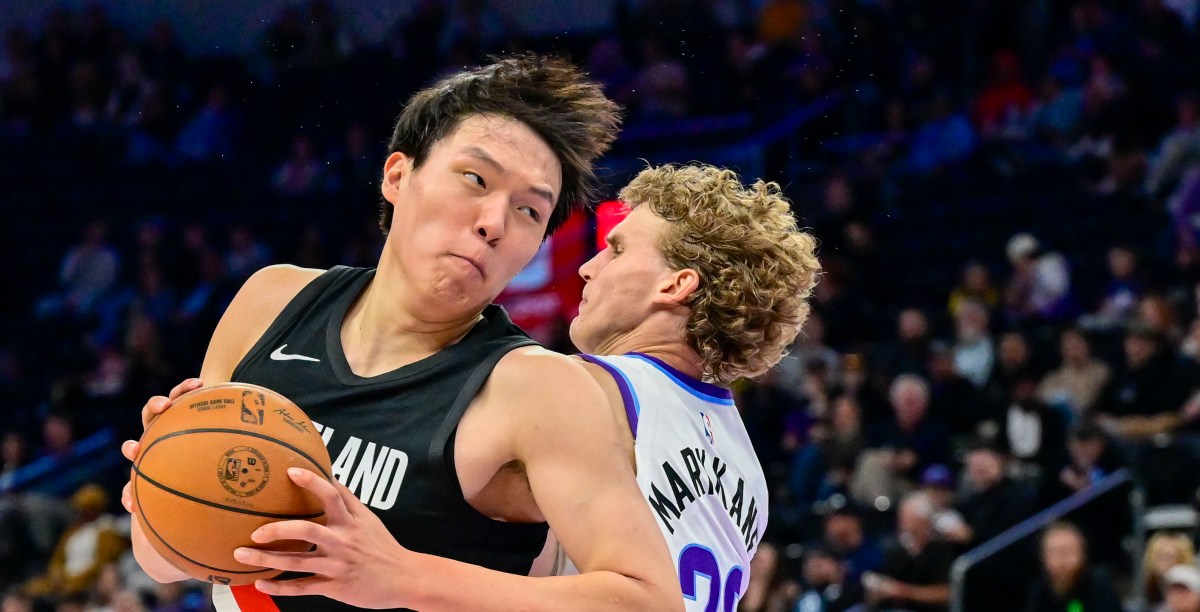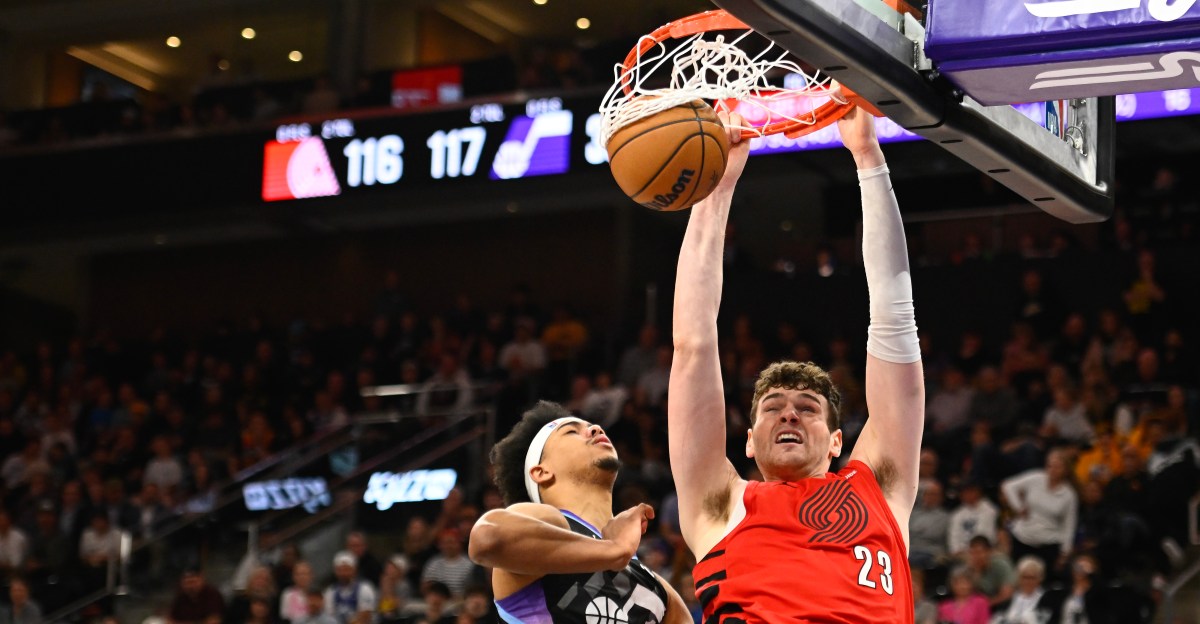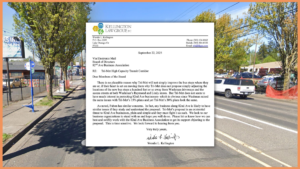Duck Tape: Film Analysis Update of Ohio State Buckeyes 2024 Oregon Ducks Football
Special thanks to Eric Boggs of The OHIO Podcast for joining me on the Quack 12 Podcast to discuss Ohio State’s roster. LISTEN HERE
This article will be a companion piece for and update to my earlier film study preview of Ohio State this season. With only a few significant exceptions which will be detailed, the Buckeyes’ position units, player grades, and schematic choices have remained very similar to the first six weeks of the year. As such the reader is encouraged to first re-visit that article for the basic underpinnings of the team, then return to this article for the ways in which it’s changed.
During Ohio State’s week 7 game against Oregon, the Buckeyes experienced two major turning points in their season: starter #71 LT Simmons was hurt on what turned out to be a season-ending knee injury (he’s since declared for the NFL draft), and DC Knowles’ simulated pressure packages – which had been ineffective but survivable in previous games — proved to be untenable. Ohio State had a bye the following week, and in subsequent games the team changed up their approach in the defensive front and tried out multiple iterations of their offensive line, dealing with a later injury to starter #56 C McLaughlin as well. So for the purposes of this article, using week 7 is an appropriate dividing line in the Buckeyes’ season to compare their playcalling and statistical production – before and after they first met the Ducks.
:no_upscale()/cdn.vox-cdn.com/uploads/chorus_asset/file/25811252/Ohio_State_Qtrs_offense.png)
The offensive line injury situation struck at a position that, as Eric and I had discussed over the Summer in previewing the Buckeyes’ 2024 season, was already in doubt in terms of depth and development after a 2023 performance which was below Ohio State standards, and so is doubly unfortunate. On our podcast this week, we recounted the history of Ohio State’s offensive line and its centrality to their dominance over the conference, Eric’s relationship with former OL coach Greg Studrawa and my opinion of former UCLA OL coach and current Ohio State OL coach Frye, and what the future holds for the unit.
After Simmons’ injury, he was initially replaced with backup #65 LT Michalski, who had a rough go of it and then got himself banged up in the 4th quarter of the next game against Nebraska, and hasn’t taken a meaningful snap since (he’s hit the portal now, though Eric told us he’s available to play if need be). Michalski was replaced by moving the starter at left guard over to left tackle, and #74 LT D. Jackson has held that spot ever since the final minutes of week 9.
Jackson’s spot was filled by #75 OG Hinzman, who was last year’s starting center but who’d been relegated to backup and rotational duty in 2024 when McLaughlin transferred in from Alabama, and it was clear they’d gotten an upgrade when McLaughlin won this year’s Rimington trophy. McLaughlin tore his Achilles tendon prior to the week 13 game against Indiana, and Hinzman has returned to his center job. Since then, the left guard position has been played by #67 OG Siereveld, though in the most recent game against Tennessee they returned to the rotational guard system they’d used at the very beginning of the year with Siereveld switching between left and right relieving starter #77 RG Tshabola, with redshirt freshman #51 LG Montgomery coming in on the left.
Simmons and McLaughlin graded out the highest on my tally sheet, and moving Jackson out of position has caused his grades to slip. Hinzman’s 2024 grades are slightly below his 2023 grades. Eric said that he understood the relief system for Tshabola because he seemed to need time on the sideline to review plays on the tablet; his grades have been the lowest of any lineman. The one lineman unaffected by all this, #70 RT Fryar, continues to post grades that I thought were below Ohio State standards last year and haven’t improved this year, only slightly better than Jackson in pass protection (21.2% error rate vs 25.6%) but substantially worse in run blocking (34.3% vs 24.2%).
As currently composed, the five expected starters on the line have cumulative run blocking error rates at about 39% and pass protection at about 23%, with fairly uniform grades across the board in pass pro but the interior linemen in run blocking close to 50% error rates during the second part of the season. This compares to grades for the starting five during the first part of the season that were 29% in run blocking and 12% in pass protection, so a falloff by 10 points when rushing and 11 points when passing.
Schematically, Ohio State has made some adaptations to this situation of varying effectiveness (one of the changes in the structure of the passing pattern that will be discussed below may have been independent and would have happened regardless, but Eric argued strongly that it was in fact related to the o-line changes and after hearing him out I’m inclined to agree). The passing game has gone to quicker throws distributed to more underneath receivers as well as rollouts and deeper drops to buy more time, they’ve moved throws attacking the sidelines earlier in the progression instead of long developing plays over the middle, and they’ve profited even more from #18 QB Howard’s ability to create plays out of structure.
These changes have resulted in very little change in their overall passing performance profile, although they’ve made Ohio State far more dependent than most teams I’ve studied on deep shots: compared to earlier in the season when 25+ air yard passes made up 4% of plays and 22% of total yardage (excluding garbage time), in the second part of the year they now make up 5.3% of plays and 27.8% of total yardage.
However, the run game has been much more affected by the offensive line changes, and while certain creative and deception-based run plays which have OC Kelly’s stamp on them have been effective against particularly aggressive defenses like Penn State and Tennessee, they’ve been stymied on a per-play basis when trying to run conventionally or against more conservative defenses. Here’s a comparison of performance in the metrics I track from charting:
:no_upscale()/cdn.vox-cdn.com/uploads/chorus_asset/file/25811251/Ohio_State_pre_post_offense.png)
Compounding this inability to block the run is the very peculiar choice to run more frequently than the Buckeyes did in the early part of the season. While in the first six weeks of the year Ohio State was a pass-first team with a 55% passing frequency on 1st downs (and if anything I thought they should have been more balanced as they enjoyed a seven-percentage point advantage in efficiency rushing vs passing in that situation back then), this has flipped around in the later part of the season. Ohio State now runs the ball on 54% of 1st downs, even as their rush success rate in that situation has collapsed almost thirty percentage points to 32.5% (these figures persist even if the Michigan game is excluded from the dataset, or if only the most recent game against Tennessee is considered).
It’s a similar though less radical story on 2nd downs, where they continue to run about 47.5% of the time (no changes and not much difference depending on yards to go) despite the success rate falling more than twenty points to 43.6%. Only on 3rd and short has there been a substantial run/pass split change to deal with the falloff in rush performance: previously the Buckeyes ran nearly every time on 3rd & short but now it’s about 50/50, although their success rates rushing and passing in that situation are now both underwater at about 45%.
Here’s a representative sample from the second part of the season of unsuccessful rushes:
(Reminder – you can use the button in the lower right corner to control playback speed)
- :00 – The line is getting reset by Purdue’s double-eagle on this outside zone, with none of the backside blockers able to get his hat playside and open the gap and the tight end getting crushed, presaging the repeated failures to run stretch against stronger defenses in November. The back reverses out of it and breaks one tackle but the safety (a future Duck) gets him on the second try.
- :19 – Multiple misses here – given how telegraphed this run design is, the defense gets moving faster than than Hinzman or Fryar can get to them, and the TE is overwhelmed.
- :24 – More concerning than physical beats are the assignment errors Eric and I discussed on the podcast, like the frontside blocks here in which Hinzman, Siereveld, and Jackson are each one guy over in zone.
- :32 – This is a stunt up front and the line has a tough time with it, Fryar is bending at the waist and lunging laterally instead of getting his balance right to block with power and Siereveld’s feet are frozen off the snap so he gets bowled over.
The best assets for Ohio State’s run game remain Kelly’s creativity in designing misdirection plays, and the physicality of starters #32 RB Henderson and #1 RB Judkins in breaking tackles and running through contact for extra yardage. As we discussed on the podcast, the offensive line issues have affected both backs’ numbers in the second part of the season, but it’s hit Henderson less hard as he’s maintained an adjusted 5.1 YPC and 41.6% efficiency while Judkins is down to 3.4 and 35.4%. Eric commented on Henderson’s quick-twitch ability helping him find alternate holes; I also continue to grade him the best I’ve ever seen in blitz pickups as a back.
Here’s a representative sample of recent successful rushes:
- :00 – McLaughlin and Tshabola are late to clear the 3-tech, but Michalski is doing a nice job on the 1-tech and the backer gets himself caught in the wash, so Henderson bounces out and breaks the corner’s ankles getting to the sideline.
- :16 – Every successful Ohio State run against Penn State was some kind of misdirection play like this old Kelly staple, the end bites on the QB sucker and the LB has stepped up without even noticing the back heading out or the RT out leveraging him. Strong finish by Judkins over one of the weaker tackling safeties in the conference.
- :36 – I count four broken tackles by Henderson on this play. The LT/LG combo isn’t getting up to the backer on the designed path and the TE is losing anyway; Henderson’s vision and smooth cut is great to hit the D-gap with no momentum loss so he can start running over defenders.
- :43 – The end and backer attack inside and the high safety is late to the play, so the pitch encounters no opposition. Not a single lineman or the TE actually sustain their block but it’s immaterial.
The components to the passing game remain the same: Howard at the wheel, #4 WR J. Smith and #17 WR Tate on the outside, #2 WR Egbuka on the inside, #88 TE Scott as the primary pass-catching tight end, and the backs as occasional outlets. Eric told us that #33 QB D. Brown is still with the team despite entering the portal and would be the backup if Howard were unavailable, though he said he isn’t very confident in Brown and wouldn’t be surprised if the true freshman 5-star #10 QB Sayin came in later in such a situation. While they have a couple of meaningful targets, I still don’t have enough for good statistical evaluation on the two backup wideouts #11 WR Inniss and #13 WR Rodgers or the three other tight ends as pass-catchers, #85 TE Christian, #89 TE Kacmarek, and #15 TE Thurman (the first two of those are blockers, the last is an alternate to Scott).
There has been a change-up in the target balance, types of route trees, and production profile among those players, however. While Smith remains unaffected, Egbuka and Tate’s numbers have basically swapped with each other – previously Egbuka was getting about a third of all meaningful targets and 12.1 adjusted YPT, while Tate looked like a possession receiver at only about 10% of targets and around 8 YPT albeit with a very high efficiency rate; now Tate is up five points in targets and +2.3 yards per target, though down substantially in efficiency, while Egbuka is down ten points in targets and -4.1 yards per target. Meanwhile Scott and the backs have also seen their targets and YPT figures climb in the second part of the season, although their efficiency numbers remain middling to poor (Scott’s hands are a particular issue).
My characterization of the change, which Eric endorsed on the podcast and furthermore argued wouldn’t have happened without the o-line issues, is that the passing offense in the first part of the year was a deliberative RPO and over-the-middle offense which featured Egbuka on the post route, Tate as a secondary read, backs and tight ends as checkdowns, and Smith as an occasional shot to take the top off the defense. Now it much more readily attacks the sidelines early in the progression – hence the increase in Tate’s numbers but Smith being unaffected on a per-target basis since this was always his role – with the ball being distributed to a wider variety of underneath options as the second read which now means Egbuka is sharing his inside targets with Henderson, Judkins, and Scott. The alteration in Tate’s efficiency, the increased dependence on early deep downfield passing, and Eric’s bet that this is tied to the o-line situation is due to needing to get the ball out before the pass rush can get home and leverage the major advantage Ohio State has over any defense they’ve played: superior athletes at wide receiver to any single coverage they’re up against.
This change to deeper, early progression shots down the sideline has largely been evident on 1st & 10 situations. 2nd down playcalling has remained fairly similar, largely going for efficiency passes in the intermediate range at a high success rate around 65% regardless of yards to go (pointing up the oddness of continuing to run so often but ineffectively on 2nd down). 3rd down playcalling has also stayed similar, focused on efficiency passes in the short-to-medium range, though this is where the success rates have fallen substantially – from over 64% on 3rd & short or medium and 37.5% on 3rd & long in the first six weeks, to 46% and 28% respectively in week 7 and beyond. This reflects an enhanced pass rush from defenses, with a doubling in the sack, scramble, or throwaway per dropback rate to 29%.
Here’s a representative sample of successful passing plays in the second part of the season:
- :00 – Ohio State had only three scoring drives against Nebraska, each of which essentially comprised a 40+ yard pass in which the outside receiver got behind the corner – a foregone conclusion — and the safety was nowhere to be found. This was the most egregious, the Huskers have bailed eight into coverage and still have the field safety stepping down on a short throw instead of playing the deep threat. The ball is slightly underthrown but there’s enough separation that it doesn’t matter.
- :24 – Deception was the key to beating Penn State’s passing defense as well – both backers and safeties chase the boundary run while Howard drops out to the field, throwing the crosser with pretty impressive accuracy to Smith who’s wide open, as somehow the defense forgot about the most dangerous man in football.
- :33 – Howard’s ability to create under pressure has been invaluable, simply getting into the backfield isn’t nearly enough to shut down a play. This is the most common of the scramble outlets – a flip out to the field side (this isn’t a great rush plan from Michigan to leave the back door open) and hit the mid-range man beater on the hoof. Howard definitely has the legs to convert in short yardage so the backer is right to charge him here, he just can’t hesitate.
- :49 – I had a hard time believing Tennessee’s DC thought they could get away with defending Ohio State like this, both safeties within 12 yards and leaving their corners isolated. Tate has cooked the other corner as well, Howard just happens to look Smith’s way first. Again the ball is a little underthrown but with this much separation there’s plenty of room for adjustment.
And unsuccessful passing plays:
- :00 – This is the simplest and most effective way to constrain the passing offense – back off the coverage, bring a simple four-man pressure and bet you’ll get through somewhere, and induce the QB into a low-productivity throw.
- :15 – The biggest single issue that I record as responsible for unsuccessful passing plays aside from protection problems is QB mechanics. Here Tate is wide open on a coverage bust and the protection has given Howard a clean pocket, but he doesn’t step into his throw with a full weight transfer onto his plant leg to give himself the power necessary and it dies on him midair, forcing Tate to come back for it and giving the safety time to run over and make a play.
- :36 – The defense has taken Smith away as the initial read and that’s essentially all they need to do here, the pressure gets through before Howard can effectively make his second read and the ball is out of his hand late.
- :41 – The T-E stunt here is making short work of the right side of the line, flushing Howard. His outlet options to this side are both tight ends and my tally sheet shows a much higher rate of the QB ditching the ball when those are his choices than trying his luck with the WR corps.
:no_upscale()/cdn.vox-cdn.com/uploads/chorus_asset/file/25811250/Ohio_State_Qtrs_defense.png)
There have been no major personnel or structural changes to Ohio State’s defense in the second part of the season, and this section of the article will largely serve as a refresher. The four-down defense typically operates out of a nickel, with a third backer coming in usually just for the more obvious run situations and preferring to keep the nickel on the field against 12-personnel offensive sets that are still in standard down & distance and field position situations.
Schematically, the most significant change has been to how the Buckeyes bring pressure. Previously they’d used a number of simulated pressures with very low success rates which I found to be of questionable theoretical design (an example is included in my previous article, it’s the fourth clip of the final video). After the bye week, they’ve mostly eliminated these while keeping the typical blitzes, three-man rushes, and racecar package described before, and replaced the sims and stunts with straight pressures in which they simply run their four defensive linemen right at the blockers and win through superior athleticism, which has been a much better approach against virtually every o-line they’ve faced.
Some rationalization in this regard, and I think a bit more of an emphasis on playing the pass from the linebackers (though I wasn’t able to confirm this with Eric), has shifted short yardage 2nd and 3rd down success rates – the Buckeyes are now above water against the pass in these situations where they were underwater before the bye week, but they’re even less effective against the run and are now nearly automatically giving up short-yardage rushing. Ohio State remains effective in long yardage situations against the pass, over 55% defensive success on 2nd & long and 67% on 3rd & long.
In terms of personnel usage, there have been two matters worth mentioning. First is that the young safety #2 DB Downs has cut down his positional error rate in the second part of the season, and combined with his incredible footspeed, he’s now grading out better than his counterpart, veteran #8 DB Ransom, on my tally sheet. That’s allowed some more versatility in the defensive backfield, in that I’ve seen Downs used more often closer to the line of scrimmage and the nickel #7 DB Hancock spun up high, although Eric said he thought this also militated for more single-high looks and leaving the corners on islands.
The second has been more rotation on the defensive line, including moving a true freshman I hadn’t seen before and had figured for an end, #96 DL Houston, inside to play tackle. As we discussed on the podcast, the available depth here is good with four backups at tackle and three at end: Houston, #95 DT Malone, #98 DT McDonald, and #93 DT Kanu, plus #92 DE Curry, #97 DE K. Jackson, and #17 DE Melton. There is however something of a Hobson’s choice, as each of them grade out substantially lower than the four starters: #58 DT Hamilton, #91 DT T. Williams, #33 DE Sawyer, and #44 DE Tuimoloau. I believe that I see clear fatigue issues in the starters when they have to play a high number of snaps and games remain competitive into the second half, and swapping them out for backups who are no more effective fresh off the bench gives no immediate benefit.
Here are the splits in statistical performance:
:no_upscale()/cdn.vox-cdn.com/uploads/chorus_asset/file/25811249/Ohio_State_pre_post_defense.png)
These personnel matters are likely the chief reason the defense against efficiency rushing has trended downward in the second part of the season, even as the yards per carry and explosive rush allowed rates have stayed good – the defense has simply been in more games in the later part of the season that the Buckeyes haven’t been able to close out at halftime or early in the 3rd quarter and d-line management becomes a factor. I think they also explain the change in pass defense numbers, as Ohio State has done better against a volume of efficiency passing but has given up a bit more long passing. (Interestingly, eliminating the Michigan game from the dataset causes the rush defense falloff to be alleviated a bit but it still persists by a few points, though it causes the gain in pass defense success to be wiped out entirely.)
I have similar grades for the starting linebackers, #0 LB Simon and #6 LB S. Styles, as well as the third rotational backer #20 LB Reese, as in the beginning of the year, and I agree with Eric that this is the least reliable of the three levels of the defense. I’ve seen more diversity at corner, with a more even split in challenges from opposing QBs against the two starters #1 CB Igbinosun and #10 CB Burke (previously, the former was challenged far more), backup #24 CB Mathews rotating through more often as Igbinosun has gotten into foul trouble, so to speak, and some more of the dime package with #3 CB L. Styles coming in.
Here’s a representative sample of successfully defended rushing plays from the later part of the season:
- :00 – Great read of the play by Hancock on the run blitz, and excellent footwork to beat the TE on the lead block and get into the backfield.
- :06 – The young rotational guys Houston and Reese are in on this rep and back literally bounces right off of them. Tuimoloau and Styles clean up with good eyes for the play.
- :14 – Hamilton keeps his arm free to fall into the lane, Williams won’t let the LG get up to the second level, and Indiana’s wasting their tight end on the read defender yet again so Downs is free to shut the door on the back after lining up with his heels on the line to gain.
- :25 – The back is supposed to hit the A-gap with the RT as the lead blocker but Hamilton is squeezing it too much for that to be viable. He bounces it to the B-gap but that’s much worse as Williams is killing the LG. Like a majority of Ohio State’s successful inside rush defenses this year, this play was stopped by the two starting defensive tackles alone, though of course the rest of the defense is contributing appropriately.
And unsuccessfully defended rushes:
- :00 – This was the first of three 10+ yard rushes by the former Duck in the second half of this game, as the defensive front started to lose some push in a low-scoring contest. The tackles are slanting to the field with Sawyer stunting behind them so the big boundary gap has to be filled by the backers and the nickel, but Simon gets way too aggressive and Styles and Hancock are effectively both taken out by the same block from the LG.
- :06 – Indiana went three for three on 3rd & short rushing during meaningful play. Nice job by Williams here but in a recurring issue Tuimoloau fails to set the edge, instead getting too deep, and both backers attack the same gap leaving the B-gap wide open. The secondary tackling is at least good for some comedy.
- :30 – This was the 32nd designed run (not counting QB scrambles) defended today with only three run snaps relieved at this point by backup defensive tackles. I wasn’t particularly impressed with Michigan’s o-line run blocking in this game or in others but correlation analysis showed them ticking up their effectiveness over time when controlling for field position as the defense tired out. Here they’re going on a game-winning 10-play scoring drive, all runs, with one illegal substitution penalty on the defense.
- :37 – The most effective category of running play, as it is against almost all Big Ten defenses, is a designed QB keep on misdirection, either QB draw, power sucker, or zone read (excluding sneaks as a special category, those are even higher). I don’t know why this conference can’t master the scrape exchange but here it is for about the thousandth time I watched this year, the end and the backer fire right at the RB, the QB pulls it out of the mesh and runs around them for 15 yards.
Here’s a representative sample of successfully defended passing plays in recent games:
- :00 – Here’s the dime package on 3rd down, with a three-man rush, two high safeties (note Hancock high and Downs over the TE), the backers on the QB and RB, and nice tight man coverage across the board. Downs adroitly dodges the rub concept and makes the tackle.
- :11 – This was where it hit the bricks for Indiana, Ohio State quit with the long developing stunts and sims, and leveraged their massive athletic advantage to just wreck the blockers. They’re simply faster than the tackles can vertically drop or the RB can get in position.
- :28 – Great recognition of the play design here by Burke, effectively abandoning his man and taking the underneath crosser whom Igbinosun is never going to keep up with. The pass rush, even with Styles getting held, ensures the QB won’t hit a better target.
- :46 – Sawyer single-handedly knocks over the RT and RG and occupies the RB in pass protection, so there’s no one to stop Williams looping around (good speed for a man his size) and flushing the QB. A confident strike to the TE’s numbers in rhythm or a scramble drill throw to the drag route are probably 1st downs here, but the QB has panicked in terror.
And unsuccessfully defended passing plays:
- :00 – I’m not in love with this protection scheme, it’s wasting two guys and still barely picking up the blitz with this goofy C pull protect, but the QB is good enough to step through the heat. Penn State waited until midway through the 3rd quarter to challenge Burke deep and got him with his hips misaligned to the sideline so he couldn’t recover against the dig, and on a cover-1 blitz that’s going to give up a lot.
- :16 – This is a pretty terrible blitz pickup by Indiana but given the pre-snap DB alignment the QB was always going to throw this to his favorite target regardless. Igbinosun is in press and defends him in the usual way.
- :39 – This play illustrates somewhat the philosophy shift on defending 3rd & short / medium situations, note how most of the second level is planted at the line to gain defending underneath passes rather than attacking the run (against a famously run-heavy offense). The other liability here is if the offense goes bigger, as in this long orbit motion that cuts back against Burke in zone and which leaves Simon standing flat-footed in the lane.
- :54 – Three of the four linemen in are backups here, and Tennessee is doubling Hamilton. The QB gets a clean pocket and puts a tight spiral on the post route. Downs’ hips are wrong in underneath coverage so he can’t recover on the break and the throw is in too quick for Hancock to break up from behind.
Share this content:















Post Comment